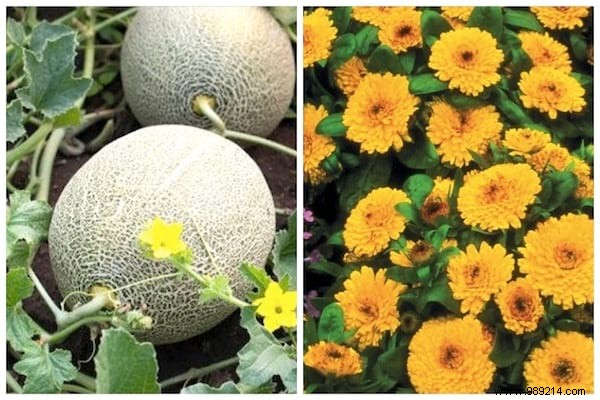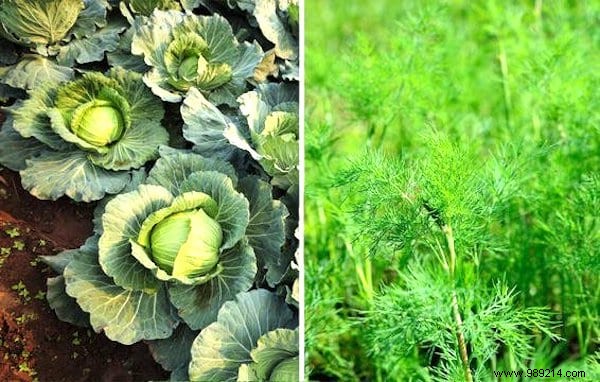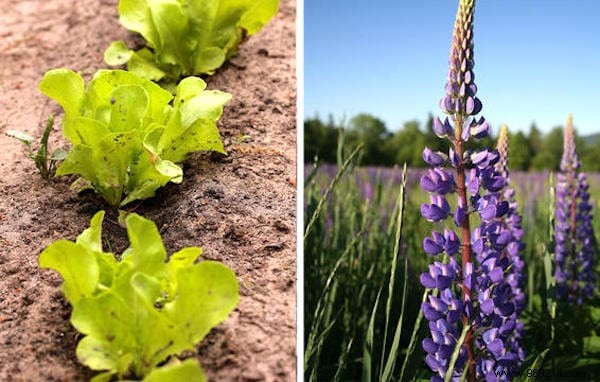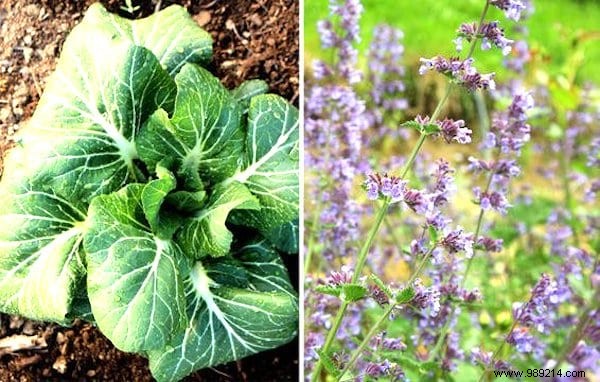
The ancients planted certain species of vegetables and flowers together, because each brings to the other what he lacks.
Organic gardeners have taken up this principle to have a beautiful and healthy garden without pesticides.
Indeed, certain combinations of plants or flowers have extraordinary (even mysterious) powers.
Scientific studies on the subject confirm that certain combinations are really beneficial — and experience shows that the mutual benefit is real.

It's also a good way to use garden space more efficiently.
Creepers cover the ground, upright plants grow skyward, allowing both to live on the same plot.
Companions can also avoid pest problems. Indeed, onions repel pests, and nasturtiums attract aphids away from the most susceptible vegetables.
Here are the 26 plants you should always grow side by side because they help each other in amazing ways . Watch:

Gardeners have been planting garlic next to roses for ages. Garlic repels rose pests. Chives are also very repellent. In addition, its small purple or white flowers in late spring are beautiful next to roses.

Some varieties of marigold or calendula repel nematodes that squat in melon roots. And this trick is just as effective as chemical treatments.

Cabbage maggot larvae nibble cabbage leaves and form large holes. Well, you should know that the stems of tomatoes effectively repel them.

The creeping stems of the nasturtium are an excellent companion for cucumbers, squash and zucchini. Indeed, nasturtiums repel cucumber beetles, but be careful that they do not become a hiding place for other pests such as spiders and ground beetles.

Pests prefer both amaranth and ragweed (ragweed) over bell pepper. Just be careful to remove the flowers before the seeds sow and invade you.

Dill is an excellent companion for plants in the cabbage family, such as broccoli and Brussels sprouts. The sprouts support the dill which has quite soft stems, while the dill attracts the tiny birds that control cabbage worms and other cabbage pests. Be careful, never grow carrots next to dill!

Beans attract insects that prey on maize pests such as leafhoppers, fall armyworms and lady beetles. In addition, the beans climb on the corn stalks.

The Nicotiana (flower tobacco) and cleome (spider flower) provide natural shade to lettuce and salads.

Plant radishes among your spinach to repel leaf miners away from the spinach. Even if they nibble on radish leaves, they still grow underground.

The sea alyssum is a flower that is often placed in beds or borders. It has tiny flowers that attract insects such as predatory wasps. Plant it next to bushy plants like potatoes, or let it spread out to form a ground cover under tall plants like broccoli. Bonus:its sweet scent fills the whole garden in summer.

The nectar of dwarf zinnias attracts ladybugs and other predators that won't come to feast on your cabbage leaves.

Studies have shown that planting catnip (one of eight plants that naturally repel mosquitoes) alongside cabbages reduces bark beetle damage to cabbages.

Damascus nigella has large blue flowers and goes perfectly with strawberries, giving them a light shade.